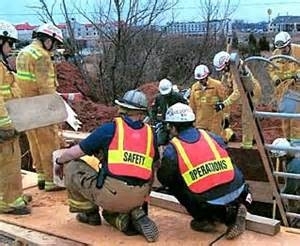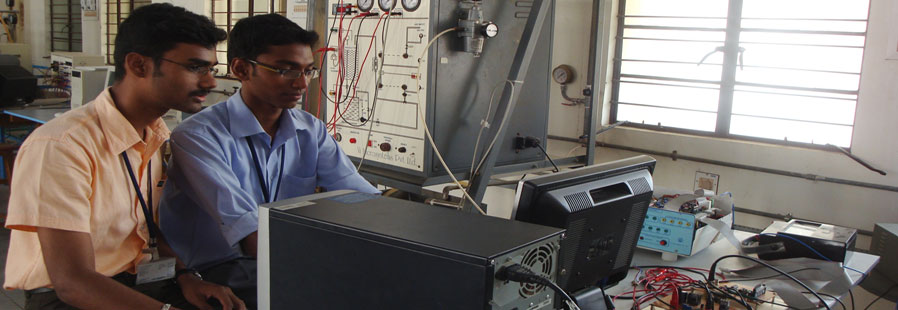
Notice Board
No of Visitors
Jamshedpur Technical Centre Blog
The Importance of the Safety Officer
Posted on 2013-10-14

We must respect the authority of incident scene officers-no matter what!
A frustrated safety officer—now that’s something new. Why not just write me about other unusual challenges, such as fire chiefs with personnel issues, firefighters with chief issues, city managers with fire department issues and people named Tiger who have marital issues. Yeah, something different.
Actually, you have a right to be frustrated. Being given a job without the authority to do the job IS frustrating. On the other hand, how much authority is really needed? Is it the need for authority or the need for respect for the position—and the person in the position?
At first read, I thought that if your chiefs aren’t going to support the safety officer position, they need to get rid of it. It’s stupid to have a safety officer if they don’t feel one is needed. Not that the rest of the fire service world hasn’t pretty much figured out that one is needed—but no, your chiefs feel that their department is sooooo unique that they don’t need it. Silly chiefs.But I can’t in good conscience recommend that you do away with the safety officer position. First of all, a safety officer is needed,and no department should be without both a health and safety officer and an incident safety officer (ISO)—or those who can fill the roles when on a run. Who says we need safety officers? NFPA 1521: Standard for Fire Department Safety Officer—that’s who.
Here, I’ll save you some time. Take a look at a few sample duties of the safety officer (see the full standard for all the details):
1. Monitor conditions, activities and operations. When there’s a perceived risk, take action.
2. Ensure rehab is established.
3. Monitor and report the status of conditions, hazards and risks to the incident commander (IC).
4. Ensure that the accountability system is being utilized.
5. Using the incident action plan (IAP) from the IC, provide a risk assessment of incident scene operations.
6. Ensure the establishment of safety zones, collapse zones, hot zones and other hazard areas. Communicate to all members present through one means (via command).
7. Evaluate traffic hazards and apparatus placement. Take appropriate actions to reduce hazards.
8. Monitor radio transmissions. Stay alert for missed, unclear or incomplete communications and bridge the gap.
9. Communicate to the IC the need for additional safety support, based upon the size, complexity or duration of the fire or emergency.There’s much more, but that should give you an idea of the safety officer’s responsibilities.
By the way, in case anyone reading this is wondering, the No. 1 organization to assist you in this area is the Fire Department Safety Officers Association (www.fdsoa.org). This group’s entire focus is support, assistance and training for safety officers. If you’re not a member, you need to be. Check them out!Now, NFPA 1521 states that the ISO no longer needs to be a fire department officer, but must meet the requirements of NFPA 1021: Standard for Fire Officer Professional Qualifications, Level 1. For the record, I’m not sure I agree with that.
Let me relate a story. For many years, a particular department was pretty good at managing accountability—the tracking of theirfirefighters at the scene. They used “passportâ€-style tags, and it worked fairly well, except for one problem. It worked depending upon who the accountability “officer†was. In many cases, the non-firefighting EMS crew on the scene would manage that job and did OK, but they were often (and easily) blown off by firefighters. Sure, it’s easy to tell firefighters to NOT do that, but it still happens. Plus, it left the EMS folks frustrated and, more critically, it left the firefighters unaccounted for. That was the real issue.
And again, you can push the issues of respect, discipline and all that, but when all that fails, we need authority behind a policy or an order, and the EMS folks simply didn’t have that.
Now, fast forward a few years. Accountability is now assigned to a chief officer. The department sends several chiefs (from several communities as a part of an aggressive automatic-aid response on first-alarm fires) to cover “immediate†duties, such as command,rear (side C), safety officer, rapid intervention and accountability. But why chief officers?
The first reason: so company officers don’t get pulled from their companies, creating unsupervised companies. A company arriving on scene should work as a task-oriented unit under their supervisor. Additionally, using chiefs for those tasks provides significant experience and AUTHORITY. And while I’m fully supportive of ICS, NIMS, fire command, etc., the fact is that some jobs are better done when there’s designated authority with the role. We could talk about authority and respect, but for the purpose of this discussion, respect must be assumed (while we understand, not always reality). However, on the fireground, what would you rather have: qualified, trained and experienced people in those roles or someone less than qualified, untrained and with little to no experience?
Another positive about having a chief (or chief-level officer) in the safety officer role: Having a level of authority on the fireground is nothing new to them and, therefore, the egos and associated personality disorders that come with some new officers isn’t “tested†at this critical-level position, especially during times of high stress and danger. Being an ISO requires a balance of experience and diplomacy, as you will most certainly find yourself in a position of having to tell the IC that you recommend things be done differently. So, knowing what you’re talking about at a level equal to the IC is pretty helpful.Now, back to your issue. To simply state it, I feel that a department safety officer, specifically an incident safety officer, should be experienced as both a company and chief officer. I feel strongly about that because the IC must listen to and act upon what the safety officer advises, and the safety officer should have experience in what it’s like to be in command of fires. I’m concerned that if you don’t have that, you have a safety officer who doesn’t have a full understanding of fire scene operations and can’t provide the breadth of knowledge and experience that’s needed to perform the ISO role.
With that said, that does NOT mean you’re not qualified to be an ISO; it just means I would prefer one with chief officer-level experience. Are there good ISOs who haven’t been chiefs? Sure. But there are also chiefs who are safety officers who may be able to bring that much more to the table, err, I mean, the scene. Bottom line: The scene is better off with a safety officer who has been or is a chief-level officer.
1. Departments that don’t agree should at least do a few things before designating a safety officer.
2. Determine what rank the safety officer will have;
3. Determine what qualifications the safety officer will have;
4. Determine the promotional process (in some volunteer fire departments, some of the BEST choices in safety officers may be former chiefs);
5. Guarantee, at the chief level (all the chiefs), that the ISO position will clearly fit into the fire scene operation, the IAP and the general operations of the fire department.




